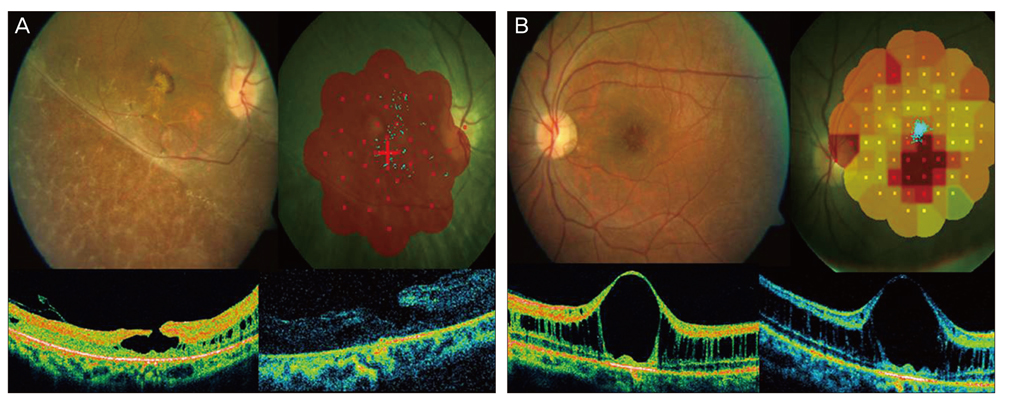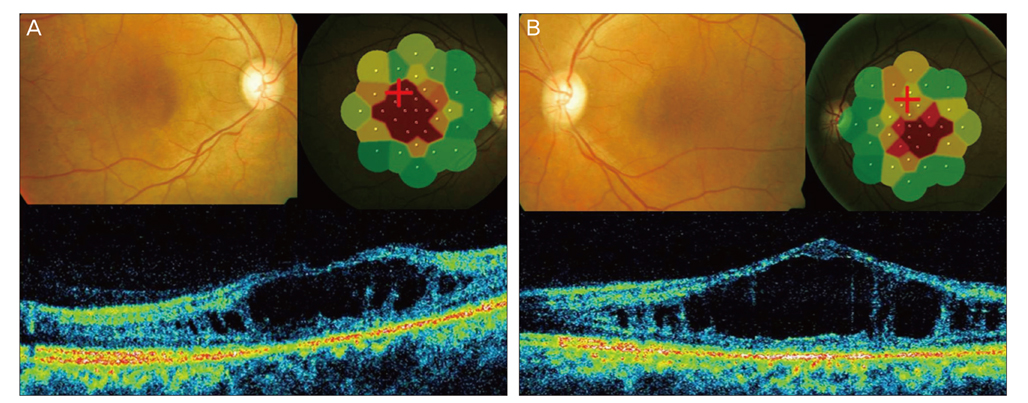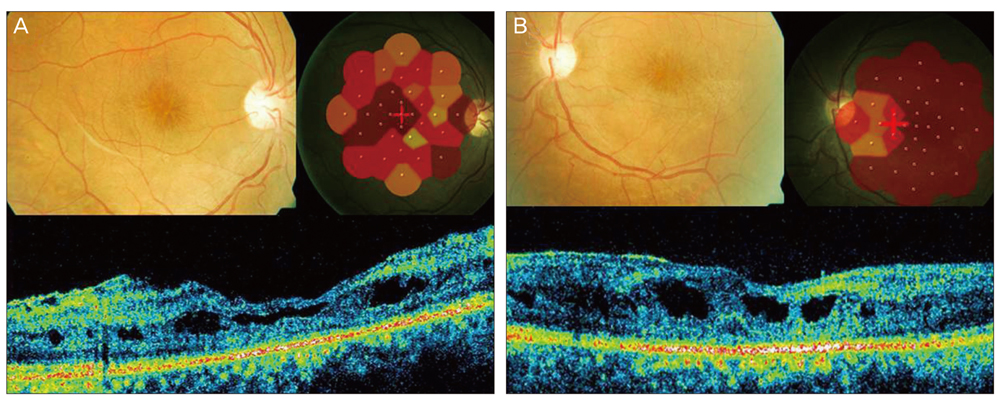Korean J Ophthalmol.
2012 Apr;26(2):143-146. 10.3341/kjo.2012.26.2.143.
Morphological and Functional Correlates in Goldmann-Favre Syndrome: A Case Series
- Affiliations
-
- 1Elite School of Optometry, Sankara Nethralaya, Chennai, Tamil Nadu, India. madhavendra_opto@yahoo.co.in
- 2Shri Bhagwan Mahavir Vitreoretinal Services, Sankara Nethralaya, Chennai, Tamil Nadu, India.
- KMID: 1364870
- DOI: http://doi.org/10.3341/kjo.2012.26.2.143
Abstract
- The purpose of this study is to describe the correlation of findings between results from spectral domain optical coherence tomography (SD-OCT) and microperimetry in a case series regarding patients with Goldmann-Favre syndrome. Goldmann-Favre syndrome is a rare autosomal recessive hereditary vitreo-retinal degeneration that impacts the functionality of vision in subjects. Three men with this condition were assessed and subjected to microperimetry and SD-OCT. Two of the men were brothers. This study finds that the retinoschisis and macular cystoid changes noted in the SD-OCT matched the scotomas revealed by the microperimetry. The findings of each of the individual cases are reported herein.
Keyword
MeSH Terms
Figure
Reference
-
1. Fishman GA, Jampol LM, Goldberg MF. Diagnostic features of the Favre-Goldmann syndrome. Br J Ophthalmol. 1976. 60:345–353.2. Ikaheimo K, Tuppurainen K, Mantyjarvi M. Clinical features of Goldmann-Favre syndrome. Acta Ophthalmol Scand. 1999. 77:459–461.3. Khairallah M, Ladjimi A, Ben Yahia S, et al. Elevated macular retinoschisis associated with Goldmann-Favre syndrome successfully treated with grid laser photocoagulation. Retina. 2002. 22:234–237.4. Theodossiadis PG, Koutsandrea C, Kollia AC, Theodossiadis GP. Optical coherence tomography in the study of the Goldmann-Favre syndrome. Am J Ophthalmol. 2000. 129:542–544.5. Chavala SH, Sari A, Lewis H, et al. An Arg311Gln NR2E3 mutation in a family with classic Goldmann-Favre syndrome. Br J Ophthalmol. 2005. 89:1065–1066.6. Vingrys AJ, King-Smith PE. A quantitative scoring technique for panel tests of color vision. Invest Ophthalmol Vis Sci. 1988. 29:50–63.7. Haider NB, Jacobson SG, Cideciyan AV, et al. Mutation of a nuclear receptor gene, NR2E3, causes enhanced S cone syndrome, a disorder of retinal cell fate. Nat Genet. 2000. 24:127–131.
- Full Text Links
- Actions
-
Cited
- CITED
-
- Close
- Share
- Similar articles
-
- A Favre-Racouchot Syndrome Developed on the Applied area of Topical Corticosteroid
- A Case of Favre-Racouchot Syndrome
- Unilateral Favre-Racouchot Syndrome with Multiple Ultraviolet Light-induced Skin Conditions
- A Case of Favre-Racouchot Syndrome
- A Case of Favre-Racouchot Syndrome Accompanied by Squamous Cell Carcinoma




